#contemporaryimprovisation
Photo

New album with Belorukov out now digitally via Paahtimo Sounds.
Ilia Belorukov - modular synth
Lauri Hyvärinen: acoustic guitar
Recorded live in Riga and Tartu in February 2019.
Artwork by Tuukka Haapakorpi.
Available on:
Spotify
YouTube
Bandcamp
#iliabelorukov#laurihyvarinen#paahtimosounds#shatteredfound#improvisedmusic#contemporaryimprovisation#tuukkahaapakorpi#modularsynth#acousticguitar#nwofri
0 notes
Text
Harmonic and Melodic Equivalence V7

Harmonic and Melodic Equivalence V7
Get this book for one dollar with promo code
buckbook
Harmonic and Melodic Equivalence V7
Add digital copy to cart - $19.99
Status: In stock, Digital book is available for immediate access.
Melodic Rotations Learning to Improvise More Based on the Composition
"Harmonic and Melodic Equivalence" is a series of books that will help you to develop many different musical skills simultaneously. The source materials for these books are exercises that contain two 3 note groupings, also called "trichords," that are manipulated in various ways. These exercises use many different types of harmonic and melodic ideas that can be superimposed over common chord progressions, scales and other musical situations. The exercises found in these courses are also great for singing and rhythm studies. Finally, the "Harmonic and Melodic Equivalence" course concentrates on the use of the three note pitch class sets (trichords) by pairing each trichord with another trichord with the same prime form. For instance, in this volume C, F#, G and Eb, A, Bb which are two 016 pitch class sets. This is a an extremely important pitch class set to learn because it is a replacement for a dominant chord. It also is part of a symmetrical diminished scale and is a great replacement for a minor, dominant or diminished chord.
Harmonic and Melodic Equivalence Exercises
This course is divided up into two sets of exercises written in treble and bass clef. The 1st set of exercises gets gradually harder but also more musical. Depending upon your musical skills you can start anywhere you want but for beginners I would recommend starting from the 1st exercise of the five. The 2nd set of exercises are called "Atomic Scales." These exercises are a technical exercise that really helps you to learn these ideas but also sound great as a melody right off the bat. There are 6 different types of "Atomic Scales" exercises in this course. You don't have to play every exercise in every key. But doing this will greatly increase the likelihood of you using it in real music in the future. Below is a listing of the exercises found in this course:
Closed position studies.
1st inversion studies.
2nd inversion studies.
Random combinations of closed position along with 1st and 2nd inversion.
Random combinations of closed position along with 1st and 2nd inversion with rhythmic displacement.
Atomic Scales Exercise 1
Atomic Scales Exercise 2
Atomic Scales Exercise 3
Atomic Scales Exercise 4
Atomic Scales Exercise 5
Atomic Scales Exercise 6
Explanation of 2nd Set of Exercises in Harmonic and Melodic Equivalence V7 Course
Below is an explanation for each set of the 6 different atomic scale exercises found in this course. Three octave sequences that move back and forth between the two 3 note groups are presented in six different configurations. These exercises are highly melodic and can be used verbatim as melodies when soloing. If we thought of the three notes as A,B,C then there would be six different ways to combine these notes. i.e. ABC, ACB, BAC, BCA, CAB and CBA. All exercises include MP3s as well as midi files so that you can hear and play these exercises at any tempo as well as versions in all 12 keys.
Three octave sequences that move back and forth between the two 3 note groups in the ABC sequence
Three octave sequences that move back and forth between the two 3 note groups in the ACB sequence
Three octave sequences that move back and forth between the two 3 note groups in the BAC sequence
Three octave sequences that move back and forth between the two 3 note groups in the BCA sequence
Three octave sequences that move back and forth between the two 3 note groups in the CAB sequence
Three octave sequences that move back and forth between the two 3 note groups in the CBA sequence
1st Set of Exercises in Harmonic and Melodic Equivalence V7 Course
Here are a few examples from the 1st set of exercises. A complete list of the different types of exercises can also be found below.
Closed Position Exercise
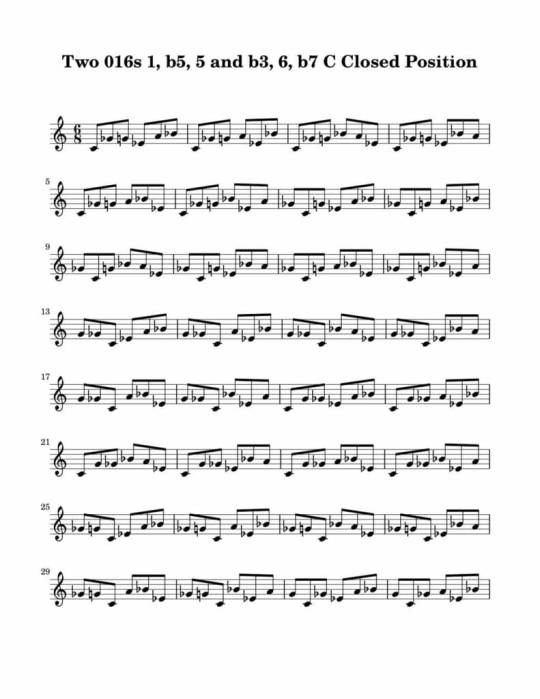
MP3 example
https://s3.amazonaws.com/media.muse-eek.com/mp3/HandMEV7/01_016_016_Degree_1_b3_b5_5_6_b7_Closed_Position_Key_C.mp3
1st Inversion Exercise
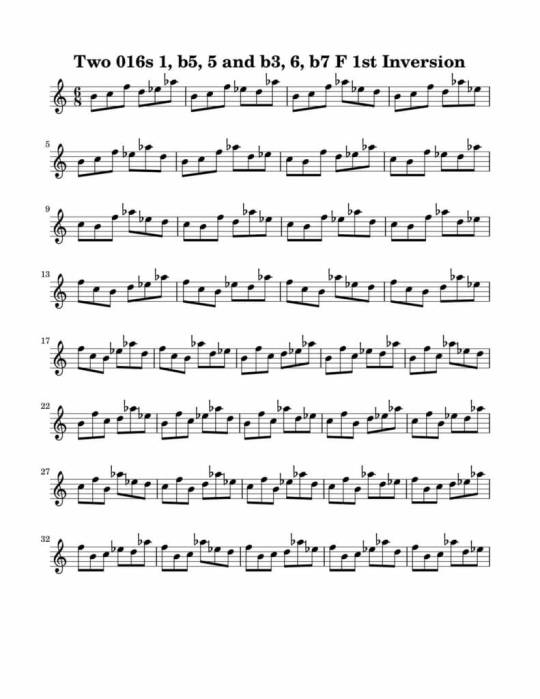
MP3 example
https://s3.amazonaws.com/media.muse-eek.com/mp3/HandMEV7/02_016_016_Degree_1_b3_b5_5_6_b7_1st_Inversion_Key_F.mp3
2nd Inversion Exercise
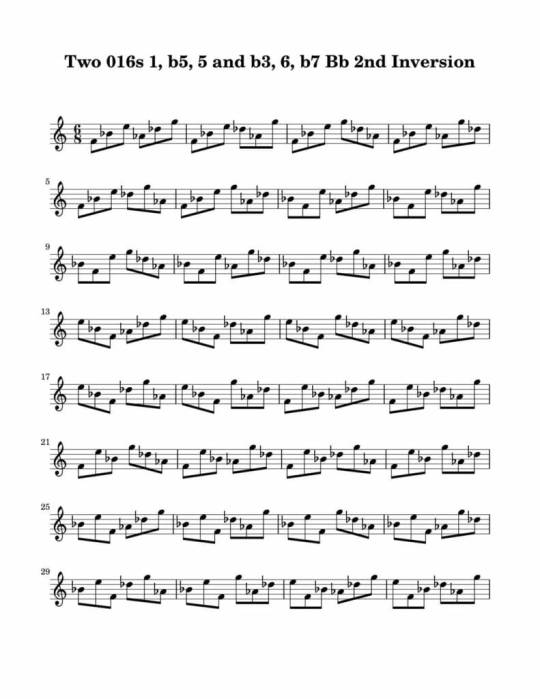
MP3 example
https://s3.amazonaws.com/media.muse-eek.com/mp3/HandMEV7/03_016_016_Degree_1_b3_b5_5_6_b7_2nd_Inversion_Key_Bb.mp3
Random combinations of closed position along with 1st and 2nd inversion.
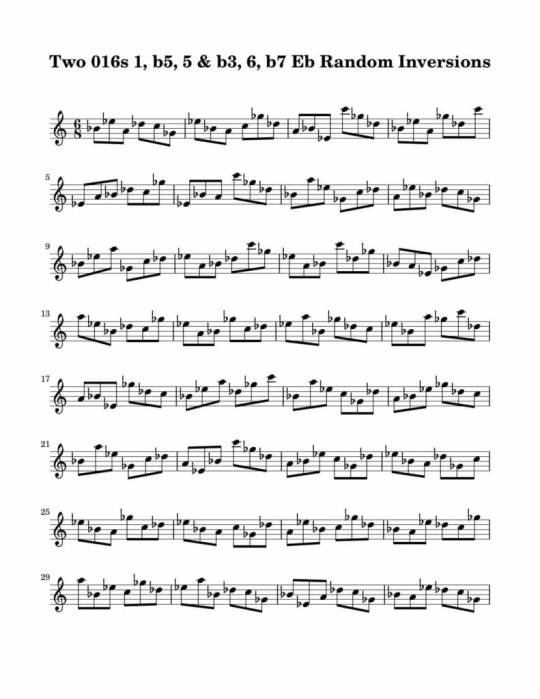
MP3 example
https://s3.amazonaws.com/media.muse-eek.com/mp3/HandMEV7/04_016_016_Degree_1_b3_b5_5_6_b7_Random_Inversions_Key_Eb.mp3
Random combinations of closed position along with 1st and 2nd inversion and rhythm permutation

MP3 example
https://s3.amazonaws.com/media.muse-eek.com/mp3/HandMEV7/05_016_016_Degree_1_b3_b5_5_6_b7_Random_Inv_Rhy_Key_Ab.mp3
2nd Set of Exercises in Harmonic and Melodic Equivalence V7 Course
Here are a few examples from the 2nd set of exercises.
Atomic Scales 1st Rotation

MP3 example
https://s3.amazonaws.com/media.muse-eek.com/mp3/HandMEV7/01_015_027_Degree_1_2_3_5_6_7_Atomic_Scale_Ex_1_Key_C.mp3
Atomic Scales 2nd Rotation

MP3 example
https://s3.amazonaws.com/media.muse-eek.com/mp3/HandMEV7/02_015_027_Degree_1_2_3_5_6_7_Atomic_Scale_Ex_2_Key_F.mp3
Atomic Scales 3rd Rotation
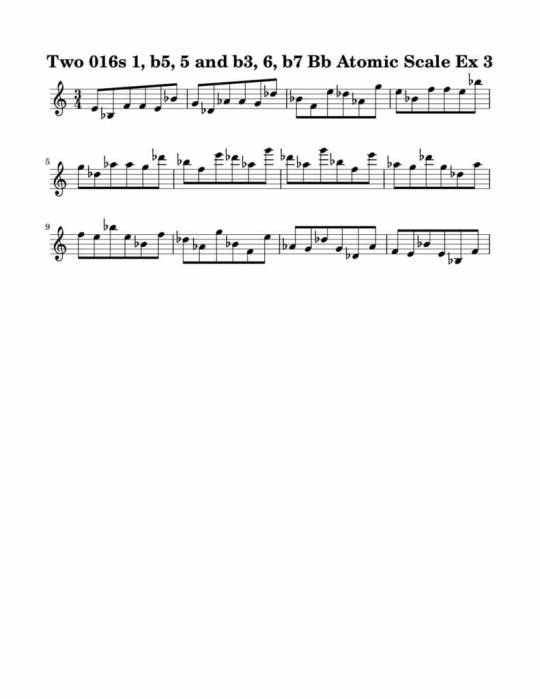
MP3 example
https://s3.amazonaws.com/media.muse-eek.com/mp3/HandMEV7/03_015_027_Degree_1_2_3_5_6_7_Atomic_Scale_Ex_3_Key_Bb.mp3
Atomic Scales 4th Rotation
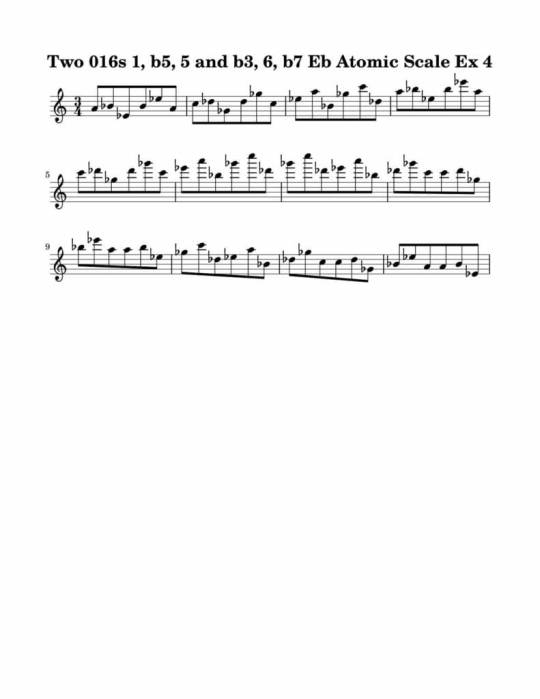
MP3 example
https://s3.amazonaws.com/media.muse-eek.com/mp3/HandMEV7/04_015_027_Degree_1_2_3_5_6_7_Atomic_Scale_Ex_4_Key_Eb.mp3
Atomic Scales 5th Rotation
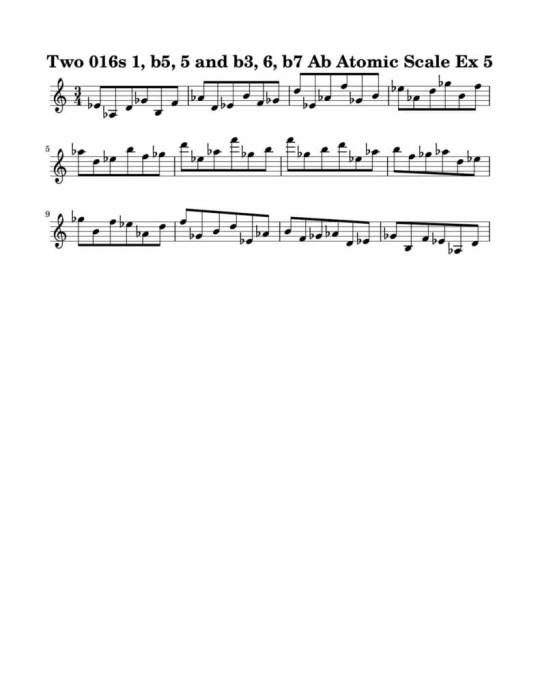
MP3 example
https://s3.amazonaws.com/media.muse-eek.com/mp3/HandMEV7/05_015_027_Degree_1_2_3_5_6_7_Atomic_Scale_Ex_5_Key_Ab.mp3
Atomic Scales 6th Rotation
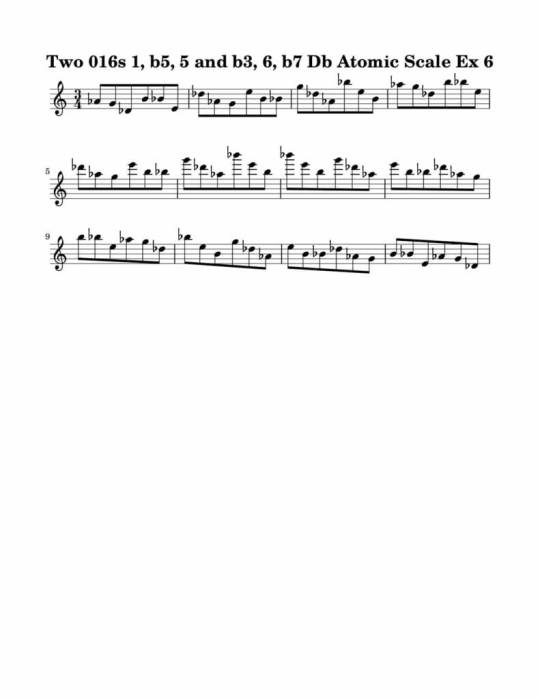
MP3 example
https://s3.amazonaws.com/media.muse-eek.com/mp3/HandMEV7/06_015_027_Degree_1_2_3_5_6_7_Atomic_Scale_Ex_6_Key_Db.mp3
TOC in the Harmonic and Melodic Equivalence V7 Course:
How to Use This Course
Harmonic/Melodic Possibilities of an 016-016 combination
Chord Possibilities of an 016-016 combination
Rotations Starting on Every Eighth Note
016-016 combination in Modal Playing
How to Think of the an 016-016 combinations used in This Course
016-016 combination daily exercise-Atomic Scales
Thinking of the an 016-016 combination as Modes
Thinking of the an 016-016 combination as One Scale
C, F#, G and Eb, A, Bb as One Scale in All Keys
Additional Practice Ideas
Get Harmonic and Melodic Equivalence V7 Today!
Add digital copy to cart - $19.99
Status: In stock, Digital book is available for immediate access.
Additional Information for Harmonic and Melodic Equivalence V7:
Digital Edition 978-1-59489-342-1
One 11 page PDF explaining exercises, 5 different types of exercises, 328 pages of exercises in PDF format in treble and bass clef
MP3's and Midi files for all exercises.
12 MP3s from Tuba MetroDrone®
What people are saying:
Hey Bruce, you were right this duel 016s is dope. I can plug this directly into my blues repertoire and it gives me a fresh new sound J. Ogland
Just wanted to let you guys know how much I'm digging this new 016-016 course. From reading the PDF this seems like a super important part of this whole series. As you mention 016 is a great substitute for a dominant chord among others. I using it both for melodic lines and chords. Really digging the new fresh sound! R. Gronick
Just wanted to drop you a note and tell you that I've picked up the Sonic Resource Guide after seeing your mention of the other 016s that can be found. What a rich resource for quickly figuring out other scales and combinations to use in music! H. Bartlett
Just wanted to let you guys know how much I appreciate this new series. It's like a crash course on contemporary improvisation. I never realize that this two triad thing was so deep and extends into non-triadic combinations. Loving this new 016 fits right into my blues playing. P. Mann
Read the full article
#HarmonicandMelodicEquivalenceV7#016-016pitchclassset#016-016rotations#016-016pitchclasssetimprovisation#contemporaryimprovisation
0 notes